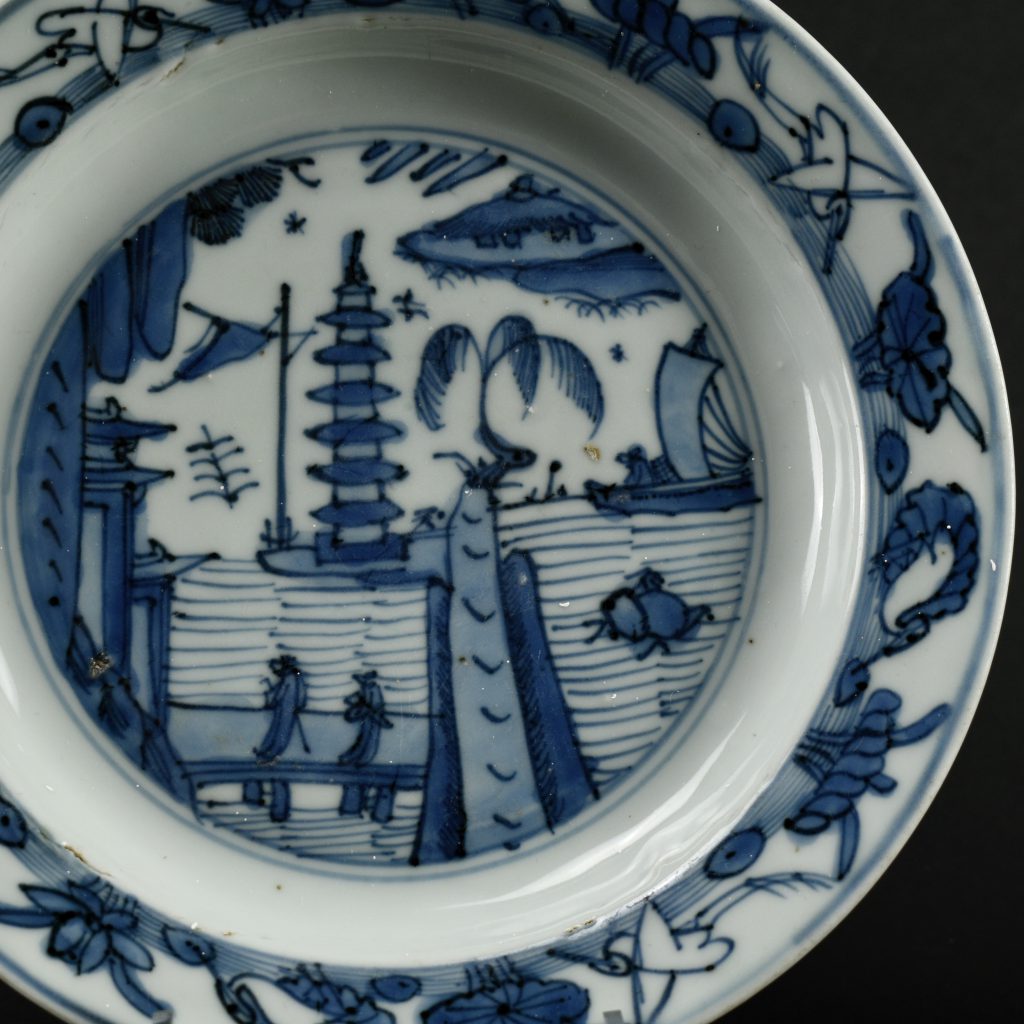
A 16th Century Ming Blue and White Kraak Porcelain Dish
A Ming Porcelain Plate, Longqing (1567-1572) or Early Wanli (1573-1620) c.1565-1600. The centre decorated in tones of cobalt blue with a mountain to the center which partly obscures a pagoda, there is a rocky overhang with a straw roved building perched on the edge and a boat below. The border is of egrets among aquatic plants. This type is counted as being Kraak ware but I struggle to see exactly why it would be classified as such. It looks to me as if it belongs to the group of Chinese export wares that started during the Jiajing (1522-1566), there are large dishes of this type in the Topkapı Palace Museum (Topkapı Sarayı Müzesi). However, Maura Rinaldi shows a related Ming dish in her book about Kraakware, she uses the border to classify it, Border II (Kraak Porcelain, a Moment in the History of Trade by Maura Rinaldi, Bamboo Publishing Ltd, 1989, page 77, plate 52).
For more information about Kraak Ware porcelain you can go to the History section of our website-menu, or click on the link: Kraak Ware Porcelain.
SALE PENDING
- Condition
- Small rim chips to the footrim, minor wear and fine scratches.
- Size
- Diameter : 19 cm (7 1/2 inches)
- Provenance
- N/A
- Stock number
- 25305
- References
- For a similar Ming Porcelain dish see : Exhibition of Ming Blue and White Porcelain, The Drs.A.M. Sengers Collection (S.Marchant & Son, London, November 2001.) page 12, item 8. For another Ming dish of this type see : Kraak Porcelain, a Moment in the History of Trade (Maura Rinaldi, Bamboo Publishing Ltd, 1989) page 77, plate 52.
Information
A Related 17th Century Safavid Fritware Dish

1108-1876
Egrets and Herons
An egret is one of several herons, most of which are white or buff, and several of which develop fine plumes (usually milky white) during the breeding season. Many egrets are members of the genera Egretta or Ardea which contain other species named as herons rather than egrets. The distinction between a heron and an egret is rather vague, and depends more on appearance than biology. The word 'egret' comes from the French word "aigrette", referring to the long filamentous feathers that seem to cascade down an egret's back during the breeding season.






